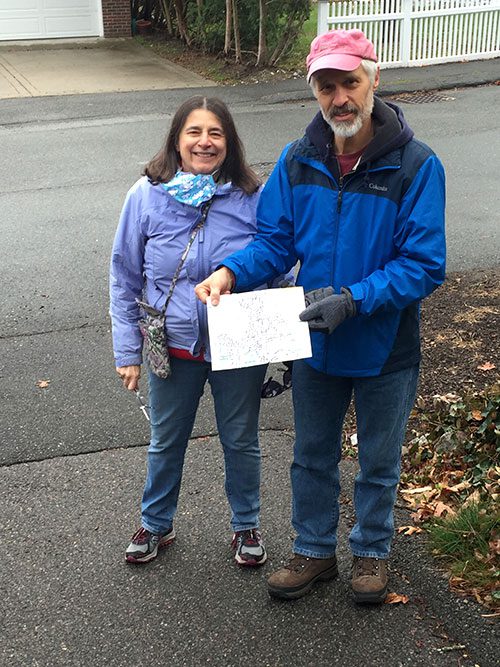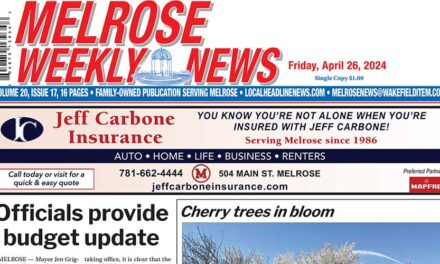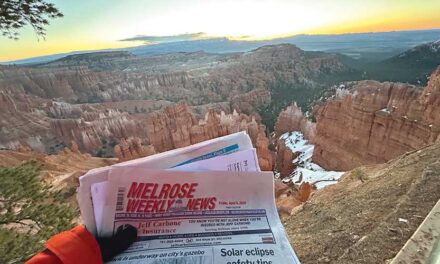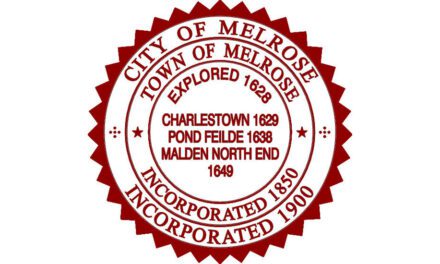Published June 5, 2020
By CHARLIE FAULSTICH and ELAINE LeGENDRE
MELROSE — With few places to go because of the coronavirus pandemic, many Melrose citizens took to the streets for both a diversion from their newly confined lives and for much needed fresh air and exercise. Being avid walkers, and now working from home with no commute, we took this opportunity to do something we had thought about for some time: to explore all of Melrose in detail.
Despite running, biking, and walking in Melrose for nearly 38 years, we had not experienced a lot of Melrose up close and personal. Much of our outdoor activity was constrained to our usual routes in the immediate neighborhoods surrounding our home, between our home and downtown, or at Breakheart Reservation. So we decided what better way to fully explore our community than to walk the full length of every public and private street in Melrose. Around mid-March we began our journey in the neighborhoods adjacent to our home, marking the routes taken on a paper map as we walked.
After a week or so of this, we went digital and downloaded a phone App that tracked our three to five mile daily trips. Once home, we transcribed all the completed streets onto our paper map. Eventually, we had to drive to sections of the city to walk those neighborhoods or we would have spent most of our time walking back and forth to our house. After walking for at least an hour nearly every day for about a month and a half, we had completed our goal.
Walking affords you the opportunity to really study the environment around you. Other forms of transportation require more of your undivided attention to safely move about. Walking allowed us to stop and converse with people we knew (safely, with face masks and from at least 6 feet apart, of course), to have our photograph taken by a friend, to admire what we encountered, and to easily double back to see something again. And, with all the dead end streets and the convoluted road layout, walking every street in Melrose required a lot of back tracking, adding extra distance to the effort.
So what did we take away from our community trek? We especially admired the many historic and Victorian era homes Melrose is famous for. We discovered a giant metal rooster and two sidewalk granite monuments looking more important than their simple task of delineating the Melrose/Stoneham line. We climbed many hills, several affording spectacular views of the Boston skyline. We discovered conservation land previously unfamiliar to us. We found a “Little Library” containing not books, but food and toilet paper. We observed many Teddy bears peering out from front windows, put there during the pandemic to create a scavenger hunt type activity for families with young children. We also experienced several “Clap Because We Care” Melrose tributes on our Friday night walks.
While most of what we observed was positive, we were saddened by the roadside trash we encountered. This included items unique to the times such as latex gloves and face masks. We were also surprised by the number of plastic nip bottles under foot. Several years ago, we began picking up the rubber bands presumably dropped by mail carriers in our neighborhood. At the conclusion of our trek our rubber band ball has sadly grown to twice its size.
Completion of our goal was a bittersweet accomplishment. Since we initially did not record our daily mileage, we can only guess that we walked approximately 150 miles. Overall, we found that this experience was a great way to make our daily walks much more interesting while familiarizing ourselves with neighborhoods we had never visited before. We have since returned to several areas of the city that we found especially interesting, to walk them again and to photograph some of their majestic houses. We always felt that Melrose was a very walkable city, and now we have the proof to back that up.





